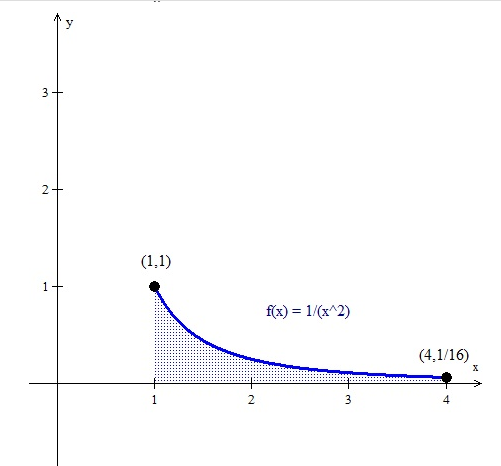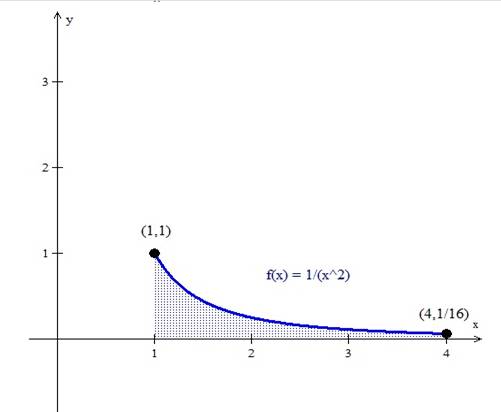
a.
Graph
a.
Answer to Problem 79RE

Explanation of Solution
Given information:
A function
Graph
Calculation:
The function
Graph

Hence ,
b.
Approximate the area
b.
Answer to Problem 79RE
Explanation of Solution
Given information:
A function
Approximate the area
Calculation:
Approximate the area
The area under
Now calculate
Now partition the
Because we are using the left endpoint of the subintervals,
Now put all values in area function we get,
Hence, the area of the graph of
c.
Approximate the area
c.
Answer to Problem 79RE
Explanation of Solution
Given information:
A function
Approximate the area
Calculation:
Approximate the area
The area under
Now calculate
Now partition the
Because we are using the left endpoint of the subintervals,
from the graph we see that
Hence, the area of the graph of
d.
Express the area
d.
Answer to Problem 79RE
Explanation of Solution
Given information:
A function
Express the area
Calculation:
The area under
The area under the function
Hence, the area
e.
Use graphing utility to approximate the integral.
e.
Answer to Problem 79RE
Explanation of Solution
Given information:
A function
Use graphing utility to approximate the integral.
Calculation:
The area under
The area under the function
Hence, the integral is
Chapter 14 Solutions
Precalculus
Additional Math Textbook Solutions
Precalculus: Concepts Through Functions, A Unit Circle Approach to Trigonometry (4th Edition)
Calculus: Early Transcendentals (2nd Edition)
Calculus: Early Transcendentals (3rd Edition)
Calculus and Its Applications (11th Edition)
Calculus, Single Variable: Early Transcendentals (3rd Edition)
 Calculus: Early TranscendentalsCalculusISBN:9781285741550Author:James StewartPublisher:Cengage Learning
Calculus: Early TranscendentalsCalculusISBN:9781285741550Author:James StewartPublisher:Cengage Learning Thomas' Calculus (14th Edition)CalculusISBN:9780134438986Author:Joel R. Hass, Christopher E. Heil, Maurice D. WeirPublisher:PEARSON
Thomas' Calculus (14th Edition)CalculusISBN:9780134438986Author:Joel R. Hass, Christopher E. Heil, Maurice D. WeirPublisher:PEARSON Calculus: Early Transcendentals (3rd Edition)CalculusISBN:9780134763644Author:William L. Briggs, Lyle Cochran, Bernard Gillett, Eric SchulzPublisher:PEARSON
Calculus: Early Transcendentals (3rd Edition)CalculusISBN:9780134763644Author:William L. Briggs, Lyle Cochran, Bernard Gillett, Eric SchulzPublisher:PEARSON Calculus: Early TranscendentalsCalculusISBN:9781319050740Author:Jon Rogawski, Colin Adams, Robert FranzosaPublisher:W. H. Freeman
Calculus: Early TranscendentalsCalculusISBN:9781319050740Author:Jon Rogawski, Colin Adams, Robert FranzosaPublisher:W. H. Freeman
 Calculus: Early Transcendental FunctionsCalculusISBN:9781337552516Author:Ron Larson, Bruce H. EdwardsPublisher:Cengage Learning
Calculus: Early Transcendental FunctionsCalculusISBN:9781337552516Author:Ron Larson, Bruce H. EdwardsPublisher:Cengage Learning





